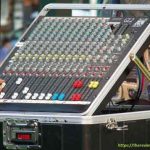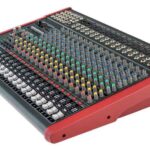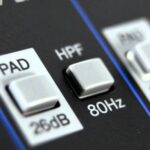In this article we discuss about mixing console troubleshooting checklist! Do you enjoy making your own music in a recording studio or working with music artists performing in live events? Do you frequently encounter technical difficulties while running a mixing console for recording studio and have no idea how to resolve them?
Don’t worry! We have compiled a list of resources to help you detect and resolve such issues without having to bring in a professional expert right away.
You’re probably more than capable of diagnosing your device without shelling out a lot of cash. Continue reading the mixing console troubleshooting checklist below to learn how to go back to your music with ease and in no time!
Keep reading for a full description of what to look out for when your mixing control starts acting up.
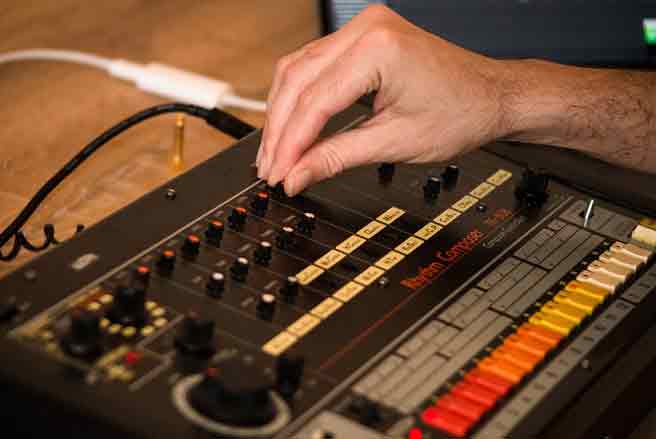
Also you can read best mixing console for recording studio
Table of Contents
Common Troubleshooting Checklist for Your Sound Mixer
Sometimes the most basic components of an electric device can pose the gredatest inconveniences, especially when you’re unaware of what to look for. In most cases a little tweaking usually gets the job done. Some of these may include:
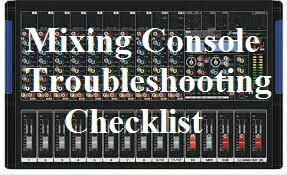
Incorrect Plugging
Sometimes incorrect or partial plugging of the audio mixer can be one of the primary problems of not getting a signal. It happens quite a lot as well, especially when you are in a hurry and don’t go over your standard routine checks.
So, it’s wise to check the plugging first thing when you don’t get a signal on your mixing console.
Bad Cable That Appears Good
Sometimes basic components such as cables can pose issues and disrupts the operations of a Mixing Console. Hence testing cables regularly is crucial if you want to prevent facing any unwarranted disturbances.
Keeping spare cables and tools such as a line tester in hand will help address and fix the cable issues much quicker. And save some money as well! However, sometimes cable testers can interpret a cable as good even when it’s not.
In such cases, just replace the old one.
Wrong Wiring
Believe it or not, wrong wiring is still a common and yet overlooked occurrence when it comes to troubleshooting in such cases. Usually, this may be an input plugged into an output.
You should be able to determine where the wires are inserted into the wrong position if you follow the signal from the source to the mixer. If you are still confused, then simply check the user guide for further instructions. You can find plenty on the internet!
No Sound Is Heard
When you can’t hear anything, make sure external instruments like speakers or microphones are properly hooked into the mixer.
If you still can’t hear anything, double-check that all relevant channels’ LEVEL settings are properly set, or check the power indication. A defective connection or a short circuit in the speaker could be the problem.
However, if you are still unable to get any sound output, you should contact your Sound Mixer dealer for further troubleshooting options.
Distorted Sound or Unwarranted Noise Is Produced
Similar to the previous point, make sure all the LEVEL controls, as well as the Line switches, are set appropriately.
If the problem with the sound mixer persists, check the XLR and phone type jacks on the channels, whether they are being connected concurrently or not. If so, make sure to connect only one jack to each channel. That usually fixes the problem in most cases.
Power Shuts Down Suddenly
Do you ever find yourself working on a project on your audio mixer, but your device suddenly shuts down? Chances are the vent on the top panel of the mixer is blocked or not getting enough space for proper ventilation.
Poor ventilation can cause the mixer to overheat, causing the power to automatically shut off. The mixer usually resets itself once it cools down. However, prolonged exposure to inadequate ventilation can cause long-term damage to the machine.
No Monitor Volume
Sometimes despite everything being plugged, you might still find that no sound is coming out even though a signal is being sent to them.
In such cases, you should turn on the monitor and also check the volume knob on the monitor itself, as it can get turned down from time to time. Both these actions are likely to be a result of overlooking them. Happens to the best of us!
No Volume Out of Channel
Sometimes overlooking subgroups of VCAs can lead to this problem. If the volume of a subgroup assigned to a particular channel is not up, this can often result in no volume coming out of Channel.
In such a situation, resetting the mixing board or starting from the same settings each time can avoid such complications.
Bad Mixer Channel
Often even after checking all other components of a Mixing Console, you still can’t pinpoint the problem and/or audio disruption. In such cases, chances are that the Mixer Channel is dead or not getting any signal.
This is usually the last thing that everyone checks as it is not as common, but the most frustrating nonetheless. It is because it usually indicates that inner circuits or chain of commands are facing problems.
This would often take time to solve and professional Technician to look into it. Whatever the case, you should probably opt for a substitute mixing board for a while as a last resort!
Conclusion
Most Mixing console problems have simple solutions to their problems and can be fixed quite easily. Therefore, before getting into a frenzy about why your sound mixer is not working, try to familiarize yourself with the possible sources.
Knowing what can go wrong gives you guidelines on how to troubleshoot and identify the problems and deliver solutions much more quickly. Therefore, our mixing console troubleshooting checklist will be able to help in this regard.

Williams Kane is a blogger and writer. He’s passionate about writing and connecting with the community, especially when it comes to sharing his ideas through writing.
I am a versatile author with a passion for exploring a wide range of topics on our multi-niche website. With a background in research and a love for writing, I bring a unique blend of expertise to our platform.
My journey began in the world of science, where I earned a degree in biology and developed a deep fascination for the natural world. This background enables me to delve into topics related to ecology, environmental conservation, and the wonders of the animal kingdom.
However, my curiosity knows no bounds, and I have ventured into various other niches as well. From technology trends and digital innovations to health and wellness tips, I strive to provide well-researched and engaging content that informs and entertains our diverse audience.
Furthermore, my dedication to staying current with the latest developments in each niche ensures that our readers receive up-to-date and reliable information. Whether it’s deciphering complex scientific concepts or simplifying tech jargon, I take pride in making complex subjects accessible to all.
Join me on our multi-niche journey, where we explore the depths of knowledge and share insights on a multitude of topics to inspire, educate, and entertain.

